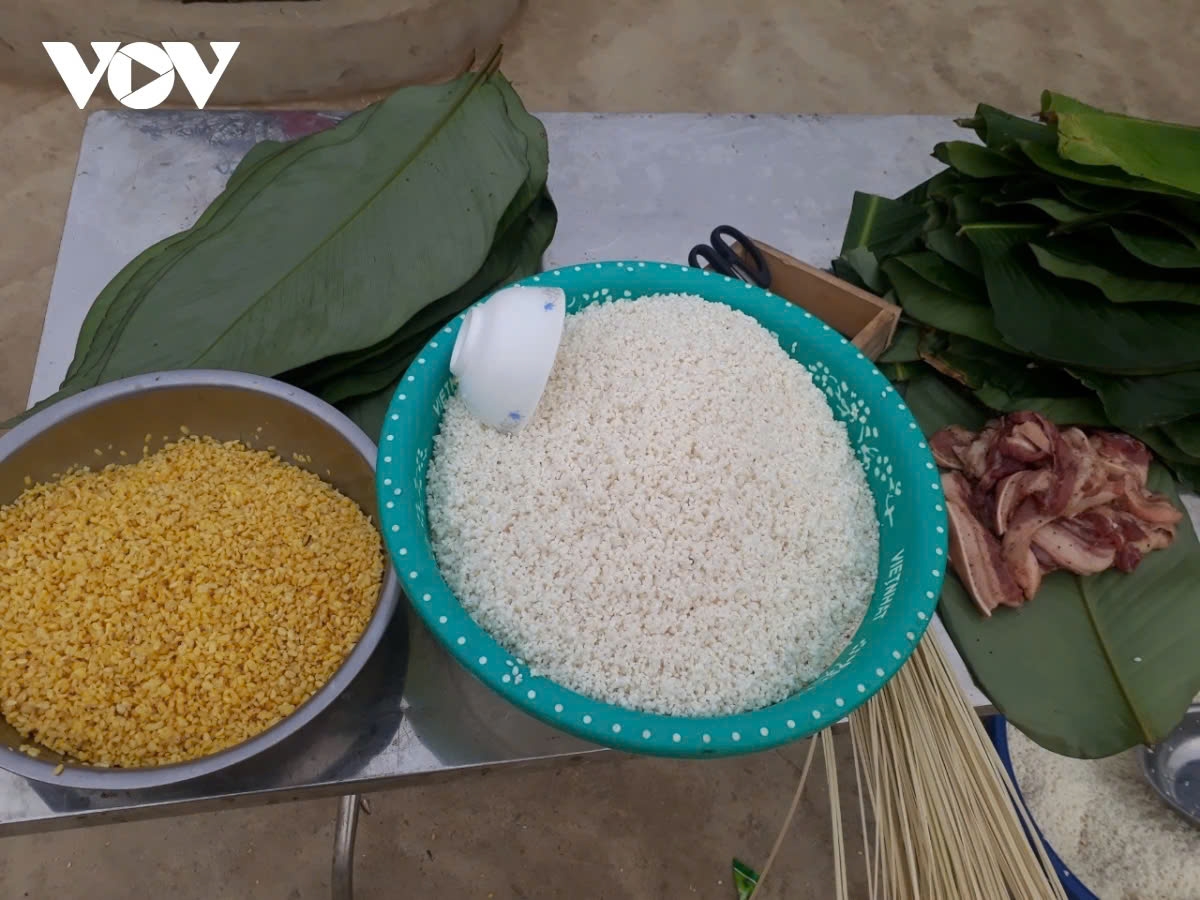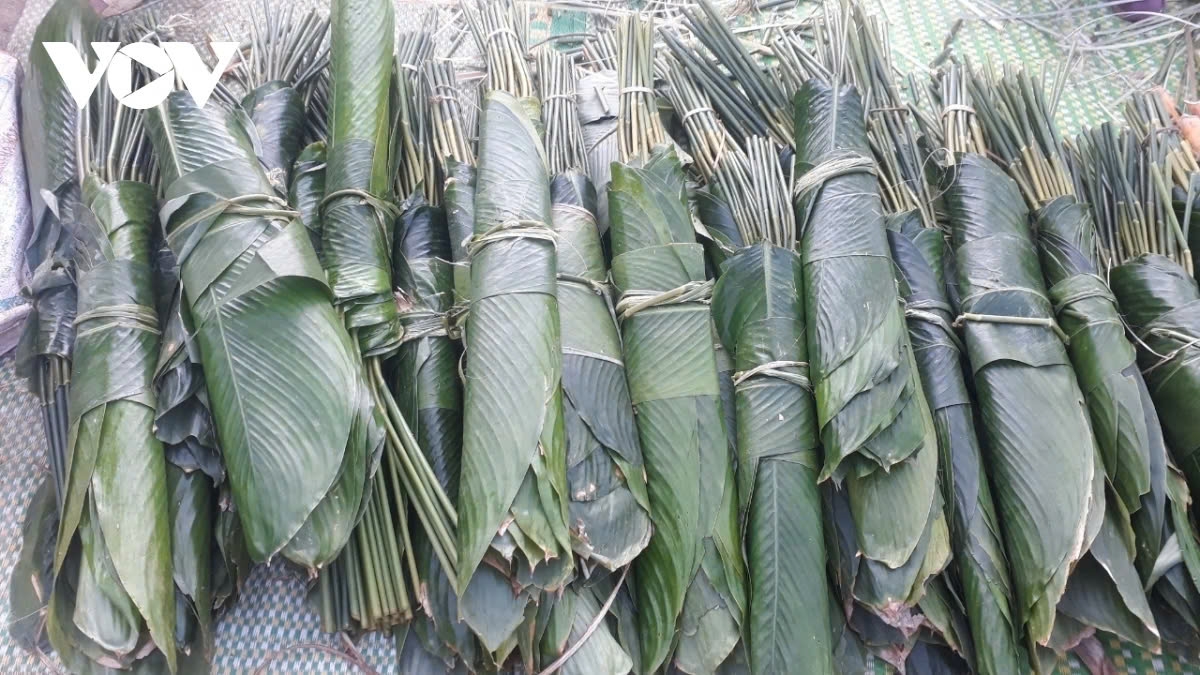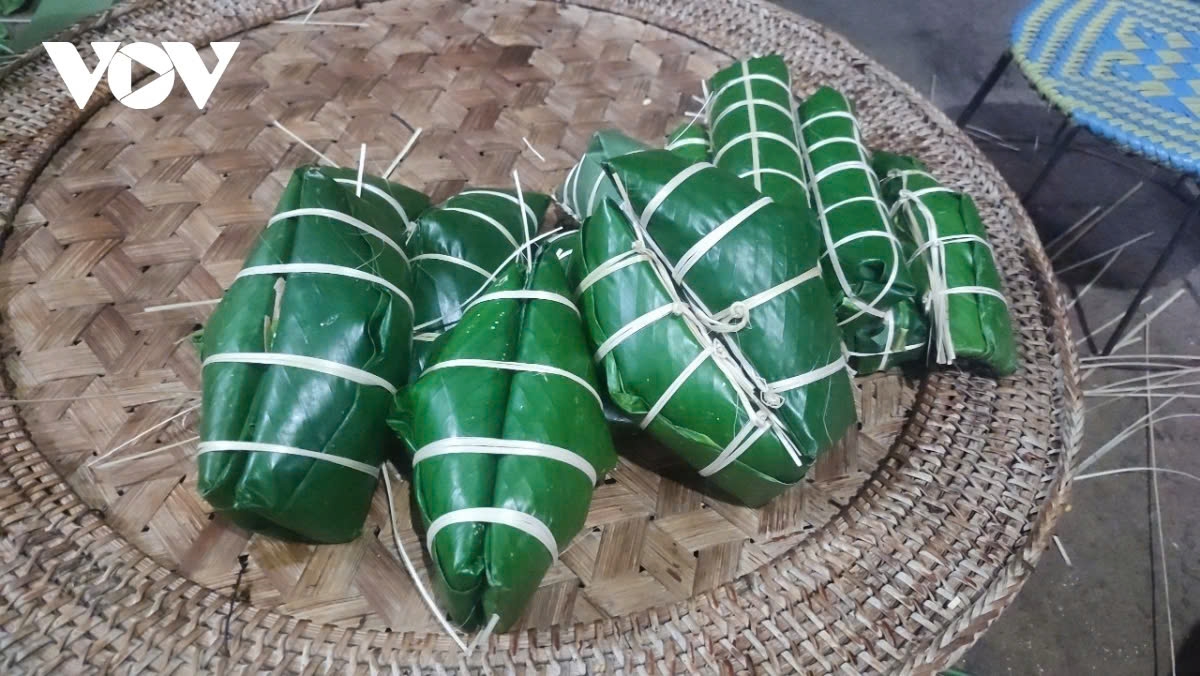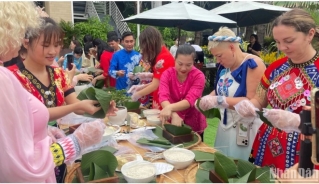The traditional Tet cake of the Thai ethnic people
VOV.VN - Just like other ethnic groups in Vietnam, making bánh chưng (square sticky rice cake) has always been an important tradition for the Thai during the Lunar New Year holiday (Tet).

From the planting season, the Thai in the villages select and plant glutinous rice for the Tet festival. This rice, a local variety, is sticky, fragrant, and loved for making bánh chưng.
“In the past, people often chose the most suitable land for planting fragrant glutinous rice varieties such as 'nếp tan,' 'nếp dúa,' or 'nếp lai’. After harvesting, they would store rice for Tet to make bánh chưng for ancestor worship,” recalls Lo Panh Cuong from Sam Mun commune of Dien Bien province.
About 20 days before Tet, people go into the forest to collect dong leaves and cut the giang tree to make the strings for binding the cake. This tree’s branches are very flexible and ideal for tying the cake. Around the 28th to 30th days of the 12th lunar month, people prepare the glutinous rice, pork, green beans, or black-eyed peas (some use peanuts) for making bánh chưng.
After washing the rice and soaking the beans overnight, they season the rice with a little salt. The dong leaves are carefully washed and dried, and the stiff parts of the leaves are cut off for softness when wrapping.

The Thai’s bánh chưng typically comes in two types - bánh chưng ống (tube-shaped) and bánh chưng gù (humped).
To make bánh chưng ống, people select large, long dong leaves, spread rice on the leaves, and add the filling of meat and beans before covering it with another layer of rice. The leaves are then rolled up, and the ends are tied with flexible giang strings to ensure the cake is secure and prevents water from seeping in during boiling.
“This is a once-a-year tradition, so my family always takes great care in wrapping bánh chưng for ancestor worship, praying for a prosperous new year. Boiling the cakes also requires careful attention to maintain a steady flame - not too strong, not too weak - so the cakes cook evenly. The water level should be sufficient to prevent the cakes from burning,” explains Lo Thi Phien from Phieng Xay village, Hat Lot commune of Son La province.
Bánh chưng gù is easier to make. The process begins by choosing large dong leaves, which may be cut or left uncut at the ends. The rice and filling are arranged on the leaves, with a larger portion of rice placed in the center to create a humped shape. The leaves are folded in an angled manner, securing the cake tightly. After wrapping, two cakes are placed together, and they are tightly bound with giang string, with the humped sides facing outward.
Once the cakes are wrapped, the dong leaves are used to line the bottom of a large pot, and the cakes are boiled for about 12 hours. After cooking, the cakes are rinsed with clean water, hung to drain, and then placed on the altar for ancestor worship before the family can enjoy them.

The finished cake carries the fragrant smell of glutinous rice, with a delicious taste from the fillings of peanuts, beans, and other ingredients. The bánh chưng ống and bánh chưng gù are easy to eat, as a single cake can be cut into portions for one or two people.
“People in the Muong Thanh – Dien Bien area often make bánh chưng gù. The two cakes bound together represent happiness and prosperity, symbolizing the blessings of life. Every family makes bánh chưng for Tết, as a way of remembering and honoring the ancestors,” shares Lo Panh Cuong.
In the past, the Thai made bánh chưng solely for ancestor worship and as food for the Tet holiday. Today, both bánh chưng ống and bánh chưng gù are sold at local markets in mountain villages and have become a familiar cultural symbol in the highlands.


